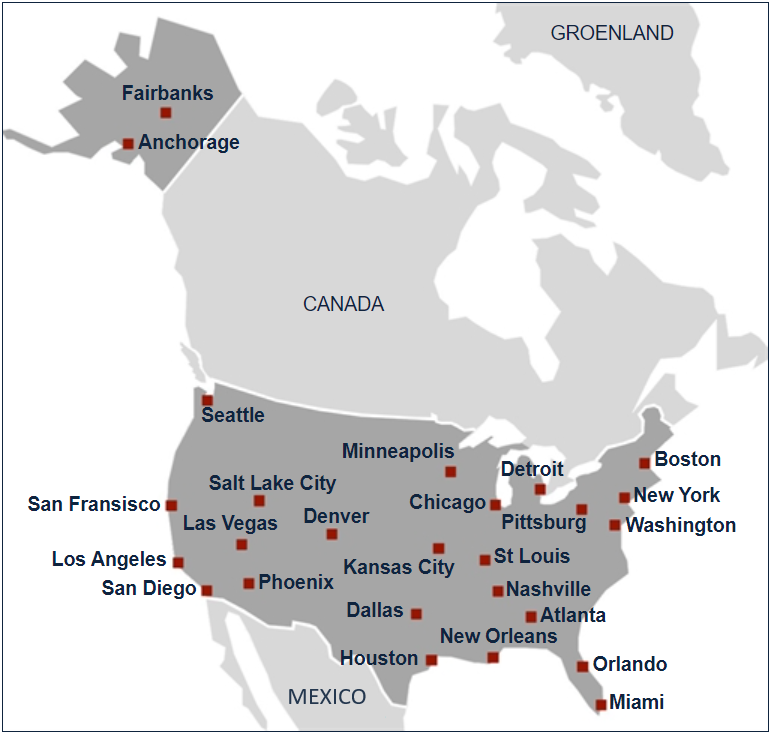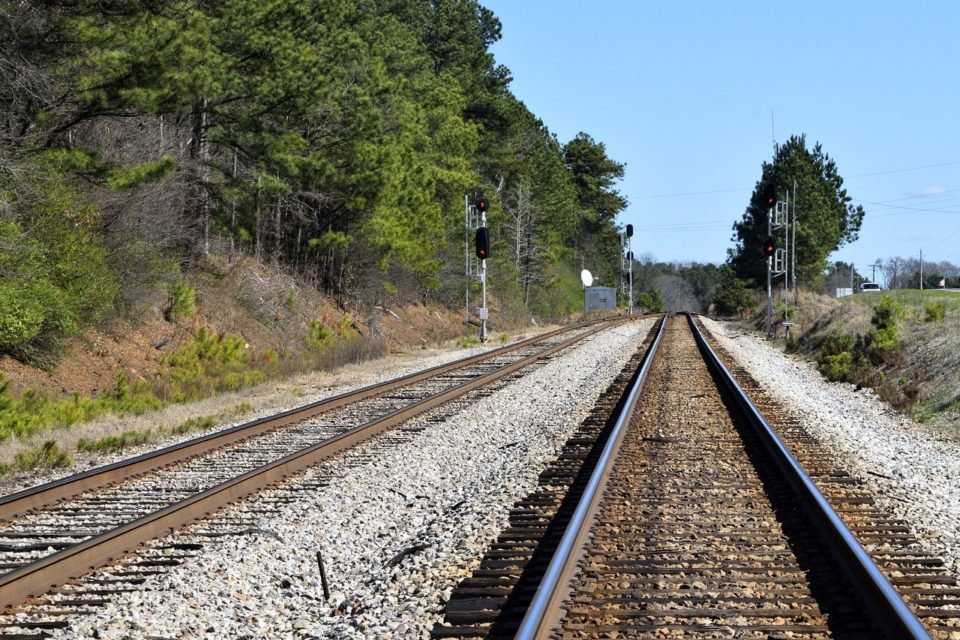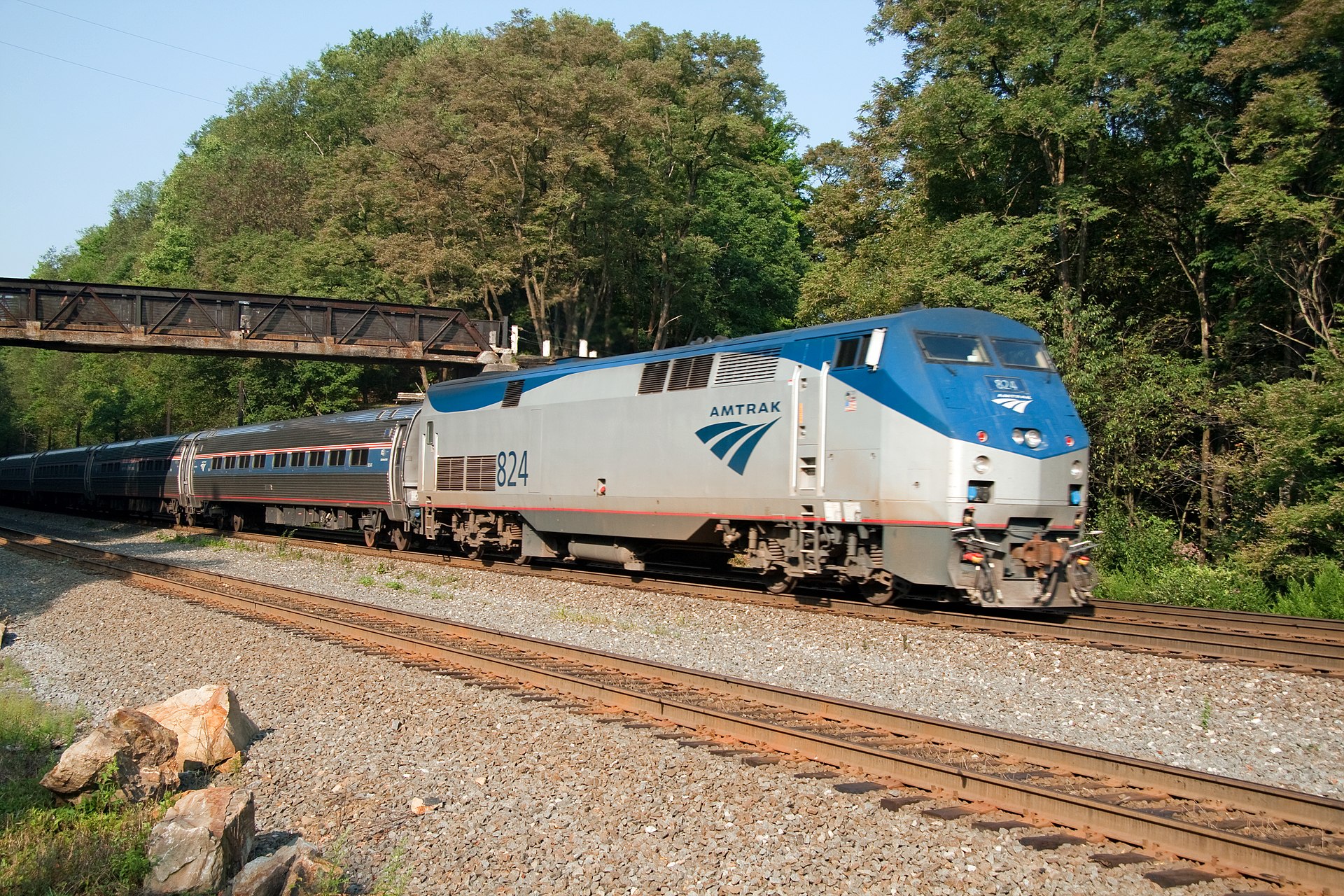Population: 342,300 million inhabitants – Administrative language: English
Political capital: Washington
Political system: The institutional and political architecture of the United States is characterized by a federal system of government with a separation of powers among three branches at the national level, as well as between federal and state governments.

Brief rail characteristics:
• UIC code : no
• Main track gauge: 1,435mm
• Main electrification: 25kV AC
• High Speed > V250 : no
Rail transport
• History of rail in USA
• Details of institutional organisation
• Rail news from the United States
Notified bodies
• Regulation: Federal Railroad Administration and Federal Transit Administration
• Security: Office of Railroad Safety
Public transport
• National / local and regional authorities
The top 10 ranking U.S. cities:
• New York, Los Angeles, Chicago, Houston, Phoenix, Philadelphia, San Antonio, San Diego, Dallas, Jacksonville
Organisation of rail transport in the US
Manager of the main railway network
Largely private and vertically integrated freight railways, dominated by large Class I freight companies, which own the infrastructure. Each operator is required by law to accept another on its tracks.
Main historical railway company
There never really was one. The National Railroad Passenger Corporation, whose commercial name is Amtrak, was created on 1 May 1971 following the merger of the passenger services of 20 different rail companies. This merger did not involve rail freight. Amtrak owns the tracks on the Boston-Washington corridor but runs on networks owned by private operators in the rest of the country.
Liberalisation (depends on the legal scope given to it)
• Deregulation of rail freight from 1980. Creation of Class I, II and III freight operators.
• In the passenger sector, which is very underdeveloped. One example is the private operator Brightline began operating in 2022 in Florida between Miami and West Palm Beach.
Mainline and international train services
• Sustained Amtrak traffic on the Northeast Boston-Washington corridor (NEC).
• One daily Amtrak train between Los Angeles and San Francisco (Oakland).
• Amtrak traffic in the rest of the country using overnight long-distance trains
• International Amtrak traffic on a few routes with Canada, such as New York – Montreal, New York – Toronto or Portland – Seattle – Vancouver.
Alternative mainline operators
In 2022, the private operator Brightline began a service between Miami and West Palm Beach.It is currently the only one. It is not subsidised.
Local / regional train services
This refers to the internal trains of the federal states.In California, regular trains link Los Angeles, Anaheim (for Disneyland) and San Diego or regular trains link San Francisco (Oakland) to Sacramento, Bakersfield and San Jose.
Suburban traffic is the responsibility of the public transport agencies of the cities and regions concerned.Alternative operators in local and regional traffic
Other local and regional operators
Not relevant in the American context
Freight train services
The freight sector is the most representative of American rail. Class I, II and III freight operators, all private.
• The Class I operators, defined as having a turnover in excess of 500 million dollars, dominate and own most of the track throughout the United States. They must accept trains from other competitors and Amtrak. 8 operators including 2 Canadian and 1 Mexican.
• Class II (regional) operators are defined as having more than 560 km of track and/or revenues of approximately $28 to $250 million. Approximately 15 representative operators
• Class III (short routes). They have fewer than 560 km of lines and revenues of less than 28 million dollars. Many are part of Class III operating groups and short lines groups.
Alternative rail freight operators
Not relevant in the American context. See above
Bus / lightrail / metro
The regions are responsible for programming, planning and supervising their public transport, as are the major cities.
Glossary of rail transport in the US

Infrastructure
◼ Main network managers:
• Many operators
• 220,044km of lines
◼ Others secondary network managers:
• —
◼ Passenger stations :
• ca 500 (Amtrak) + from local municipalities
◼ Companies registered:
• ca 500
◼ Main issues:
• High speed line
• NEC
• Ports access
• Signalling

Rolling stock:
◼ Authorized vehicles:
• Electric vehicles
• Autonomous vehicles
• Emu
• Dmu
• Railway cars
• Freight wagons
• Others
◼ Suppliers:
• History of the industry
• Industry today

Passenger services:
• National traffic yesterday
• Amtrak today
• Acela
• East Coast
• West Coast
• High Speed in the US
◼ international trafic :
• Adirondack
• Amtrak Cascades
◼ Stations:
• ca 500 (Amtrak) + from local municipalities
• History & Heritage
◼ Flow analysis:
• Main lines / local lines
• Modal shares & Economy

Freight services
◼ Industry sectors:
• Steel
• Chemical
• Intermodal
• Wood / Paper
• Others
◼ Operators:
• BNSF
• CPKC
• CSX
◼ US operations abroad:
• CPKC
◼ Infrastructure :
• little freight stations
• Marshalling yards
• Main north-south routes
• Ports
◼ Flow analysis:
• Main freight lines
• Modal share & Economy